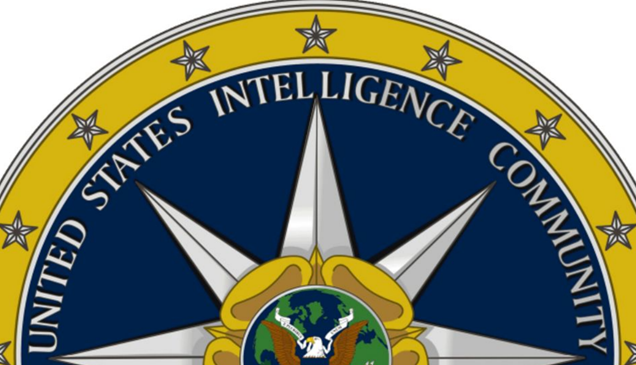
The Size of the U.S. Intelligence Community
It’s hard to imagine that there are over 1,200 organizations involved in intelligence work in the United States. But that’s exactly what a Washington Post investigation revealed back in 2010. The Top Secret America series found that, in addition to the major players like the CIA, FBI, and NSA, there were a shocking number of private contractors and smaller agencies working on national security and intelligence-related tasks. In total, more than 1,200 government agencies and 1,900 private companies were involved. That’s a massive network, and it only grew after the September 11, 2001 terrorist attacks when the U.S. government ramped up its efforts to prevent another attack by expanding intelligence operations.
Why Is This So Concerning?
You might be wondering: Why is this a problem? Isn’t more security a good thing? Well, yes and no. Here are some key concerns about such a massive network of intelligence agencies:
1. Inefficiency and Waste
With so many organizations, it’s almost impossible to avoid duplication of efforts. Imagine you’re trying to solve a puzzle, but a hundred people are working on different pieces, none of them communicating. This lack of coordination means that there’s a good chance some agencies are working on the exact same task without realizing it, wasting valuable time and resources.
- Multiple agencies might collect the same data.
- Different organizations may analyze the same intelligence in conflicting ways.
- Resources are spread thin, leading to inefficiency.
2. Poor Coordination and Miscommunication
When you have that many agencies involved in national security, it’s easy for things to slip through the cracks. Agencies might not be sharing crucial information with each other, which could lead to mismatched strategies or worse, missed intelligence. This was a major issue before 9/11, with agencies like the FBI and CIA failing to communicate effectively, which contributed to the inability to prevent the attacks.
- Information silos make collaboration difficult.
- Vital intelligence might never make it to the right people.
- Agencies may duplicate efforts because they aren’t talking.
3. Oversight and Accountability
A big concern is how well these agencies are being overseen. With hundreds of different organizations, some are bound to slip under the radar. This can lead to abuses of power, like over-surveillance, violations of privacy, and lack of transparency in how intelligence is gathered and used.
- Agencies may operate with little to no public scrutiny.
- Private contractors, who aren’t subject to the same oversight as government agencies, may be involved in sensitive work.
- This lack of transparency raises questions about accountability and trust.
4. Cost of Operation
Let’s face it: the U.S. government spends a lot of money on its intelligence community. It’s no secret that national security agencies get hefty budgets, but are we spending that money wisely? When there are so many organizations involved, it’s easy for funds to be spread thin without producing tangible results.
- Billions of taxpayer dollars are allocated every year.
- Many agencies might be working on the same thing, leading to financial inefficiencies.
- The question of whether this is a cost-effective approach is frequently raised.
The Case for a Big Intelligence Network
So far, we’ve talked a lot about the problems, but there’s another side to the story. Some argue that a large intelligence network is necessary for the complex threats the U.S. faces today. Here’s why some believe it’s worth having so many players in the game:
1. Complex Threats Require Specialized Expertise
The modern world presents a range of complex and evolving threats: from cyber-attacks to terrorism, espionage, and even pandemics. A single organization might not have the necessary skills or resources to tackle all of these challenges, so different agencies are created to focus on specialized threats.
2. Private Contractors Bring Innovation
In some cases, private companies bring specialized technologies, expertise, or innovative approaches that the government can’t easily develop in-house. While this is a legitimate reason for including private contractors, it also opens the door to concerns over the lack of accountability that often accompanies private sector involvement in national security.
3. Decentralized Risk
One argument for having multiple agencies is that it decentralizes risk. If one agency fails, there are others working on the same problem who may be able to pick up the slack. In this way, having more players in the game can act as a safety net, ensuring that no single failure has catastrophic consequences.
What Can Be Done About It?
So, with all of these challenges, what can be done to fix the system? It’s clear that reform is necessary. Here are some steps that could help make the U.S. intelligence community more efficient and accountable:
1. Increase Coordination
Agencies need to work together more effectively. Improved information-sharing and joint efforts would help eliminate duplication and make the entire system more efficient.
- Centralize data-sharing platforms.
- Hold regular inter-agency meetings to align goals and strategies.
2. More Oversight
Greater transparency and stronger oversight mechanisms would go a long way toward ensuring these agencies remain accountable to the public. Whether that means stricter reporting requirements or independent audits, oversight is essential for maintaining trust.
- Congress should hold more hearings to review intelligence activities.
- Independent bodies should monitor the actions of both government agencies and private contractors.
3. Streamline the System
Focusing on the most essential agencies and reducing redundancies would help cut down on wasted resources. Some agencies might be consolidated or eliminated altogether, focusing on core missions rather than trying to be all things to all people.
- Consolidate overlapping agencies.
- Reduce the reliance on contractors for core intelligence functions.
Conclusion:
The U.S. intelligence community is huge, and while it’s easy to see why such an expansive network of agencies was created, the challenges it presents are undeniable. With inefficiencies, lack of coordination, oversight concerns, and high costs, it’s clear that reform is needed to ensure that the system is not only secure but also effective and accountable. We’ve got to ask ourselves: Is this behemoth of a network really helping us protect national security, or has it become too unwieldy to manage? The answer might not be easy, but one thing’s for sure—it’s a conversation worth having. Thanks for reading! What do you think about the size of the intelligence community? Let us know your thoughts in the comments!
Products You Might Like:
Here are two products that tie into themes of government transparency and home security—perfect for readers interested in both history and protecting their own space:
- The Pentagon Papers on Amazon – Discover the hidden history of U.S. government actions during the Vietnam War.
- Ring Video Doorbell on Amazon – Keep your home secure with this video doorbell that lets you see and communicate with visitors remotely.
This post contains Amazon affiliate links. If you make a purchase through these links, I may earn a small commission at no extra cost to you. Thank you for supporting the site!
Support Techcratic
If you find value in Techcratic’s insights and articles, consider supporting us with Bitcoin. Your support helps me, as a solo operator, continue delivering high-quality content while managing all the technical aspects, from server maintenance to blog writing, future updates, and improvements. Support innovation! Thank you.
Bitcoin Address:
bc1qlszw7elx2qahjwvaryh0tkgg8y68enw30gpvge
Please verify this address before sending funds.
Bitcoin QR Code
Simply scan the QR code below to support Techcratic.

Please read the Privacy and Security Disclaimer on how Techcratic handles your support.
Disclaimer: As an Amazon Associate, Techcratic may earn from qualifying purchases.












































































![BASENOR 3PCS Tesla Model Y Model 3 Center Console Organizer [Carbon Fiber Edition]…](https://techcratic.com/wp-content/uploads/2025/08/71R5dfCR9FL._AC_SL1500_-360x180.jpg)





















